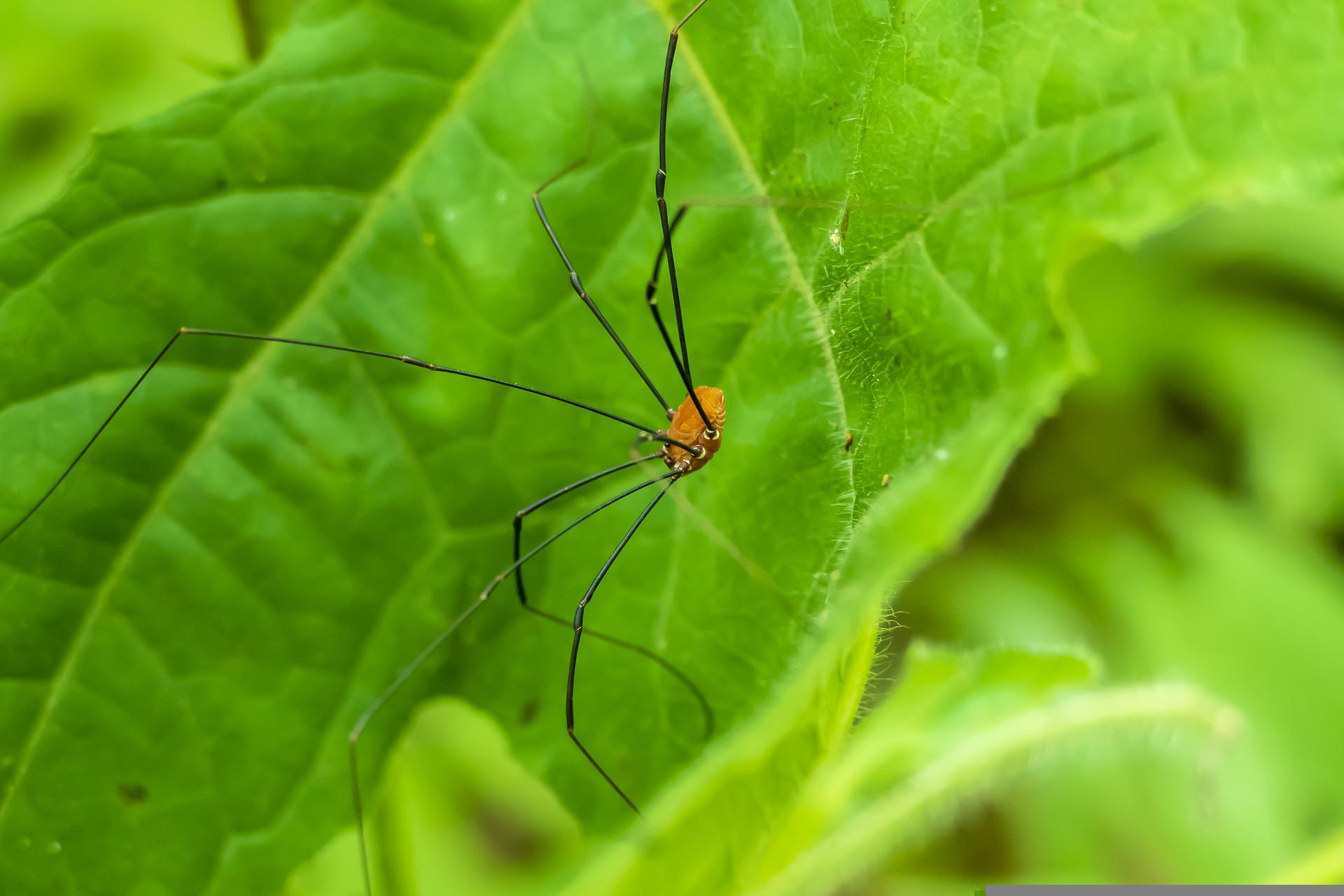Species Spotlight: Harvestmen
By Mack Swenson on August 4, 2022 in Blog
You’ve likely encountered thousands of them in your life, crawling on leaves or windowsills, hiding underneath logs or creeping up trees. They’re typically thought of as spindly spiders, but this—along with many other commonly held beliefs about the species—is nothing more than an urban legend. 
Meet the harvestman. Sometimes mistaken for daddy long legs—which are a different species—the harvestman is found on every continent except Antarctica. It’s rumored they’re the most venomous of the spiders but their jaws are too small to bite a human. While it’s true you shouldn’t fear a bite due to their minuscule jaws, neither of the other parts of that rumor have validity. Although they share a common family, they aren’t spiders at all. And they aren’t venomous. Harvestmen can produce a fluid with an unappealing smell when threatened, but this fluid is harmless to humans. This isn’t the harvestman’s only adaption against predators; these creatures may play dead or even detach their legs, which continue twitching after detachment to distract predators.
Most species of harvestmen are nocturnal because they dehydrate easily, so being active during the hot, sunny day is counterintuitive. They’re often found in humid spaces, such as in caves, under rocks, or in the nearest humid basement. Harvestmen sometimes huddle in large groups, a behavior that seems to minimize water loss. They often hunt for short periods during the day and then go into hiding. Dietarily flexible, they are both omnivores and scavengers. Besides the aphids and other small insects they gather through hunting, harvestmen may also consume plants, fungi or dead organisms. Like other scavengers, harvestmen perform the essential task of decomposing organic matter and therefore support the natural recycling of nutrients.
Harvestmen are most visible during the late summer and early fall (the harvest season, hence their name), which is generally when they come out to mate. Unlike spiders, they only have one pair of eyes rather than three or four, and they are often brown, gray or black to blend into their nighttime environment. Another important distinction between spiders and harvestmen is that the latter doesn’t have a ‘waist’ to distinguish between its cephalothorax and abdomen, so the body appears to be a single section.
Despite their appearance, harvestmen are nothing to be afraid of—they’re not venomous, they can’t bite and they perform vital ecosystem services. If anything, their spindly legs and plump bodies are somewhat comical. It’s time to dispel the urban myths surrounding this common urban dweller and embrace them for the important critter they are.